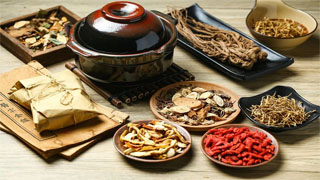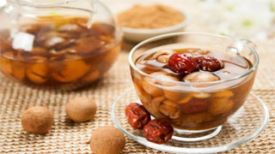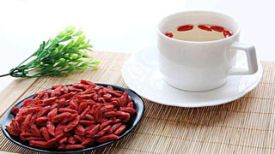
Traditional Chinese medicine believes that diabetes always focuses on heat hurting qi yin, and the most obvious symptom is dry mouth. Therefore, traditional Chinese medicine focuses on the loss of body fluid and calls diabetes "thirst quenching".
Traditional Chinese medicine generally divides diabetes into three types: upper, middle and lower.The main locations of upper gastrointestinal diseases are in the heart and lungs, generally manifested as thirst and preference for drinking, dry and hot throat, dry lips, and still dry mouth after drinking water; Frequent urination and yellowish color; The change in appetite is not significant; Tongue red, moss yellow and dry.
The main location of the disease is in the spleen and stomach. Eating too much but starving quickly is the most obvious manifestation of the disease, accompanied by dry mouth and a preference for drinking. In addition, it also manifests as frequent urination, dry stools, dizziness and dizziness, thin body, red tongue and yellow coating.
The main location of the disease is in the liver and kidneys, with frequent and heavy urination as the main manifestation; Her face is flushed, her hands and feet are hot, her waist and knees are sore and soft, and her tongue is red with little moss.
Regardless of which of the three types, promoting fluid production and protecting yin is an effective means to prevent and treat diabetes. Today, I would like to share with you ten kinds of traditional Chinese medicine tea drinks, which can be reasonably used by patients with diabetes under the guidance of doctors.
1. Shengjin Tea
【 Composition 】 5 green fruits, 6g Dendrobium officinale, 6g chamomile, 6g Zhuru, 9g Ophiopogon japonicus, 9g mulberry leaves, 10g fresh lotus root juice, 2 yellow pears, 5 water chestnuts, and 2 fresh reed roots.
[Usage] Water decoction instead of tea drink.
【 Effect 】 Nourishing saliva, quenching thirst, and moistening dryness.
【 Indications 】 diabetes.
【 Source 】 Selected Medical Formulas of Empress Dowager Cixi and Emperor Guangxu.
2. Thirsty tea
【 Composition 】 Fresh guava leaves 500g.
[Usage] Boil in water to replace tea.
[Effect] Generating saliva and quenching thirst.
【 Indications 】 diabetes.
[Source] "Complete Collection of Chinese Food Therapy".
3. Guapi Drink
【 Composition 】 30g of watermelon peel and 30g of winter melon peel, and 15g of trichosanthin.
【 Usage 】 Water decoction, 1 dose per day.
【 Effect 】 Clearing heat and generating fluids, promoting diuresis and reducing swelling.
【 Indications 】 diabetes.
[Source] diabetes Prevention and Treatment Features in China.
4. Quenching thirst and instant drink
【 Composition 】 1000g of fresh winter melon skin and 1000g of fresh watermelon skin, 250g of Trichosanthes kirilowii root, and 100g of white sugar.
[Usage] Peel off the hard skin of the melon skin and cut it into thin slices. Crush the roots of Trichosanthes kirilowii and soak them in cold water. Add an appropriate amount of water to the pot and cook for 1 hour, removing any residue. Then, simmer over low heat and concentrate until thick. When the pot is dry, stop heating and add dry sugar powder. Mix well, sun dry, crush, and bottle for later use. 10g each time, rinse with boiling water, drink substitute tea frequently, several times a day.
【 Effect 】 Nourishing yin and clearing heat, generating fluids and quenching thirst.
【 Indications 】 Ordinary diabetes patients.
[Source] "Dietary Therapy and Drinking".
5. Chrysanthemum tea
【 Composition 】 Chrysanthemum 6g, Sophora japonica 6g, Cassia seed 10g, Longjing tea 3g.
【 Usage 】 White boiled water infused tea drink.
[Effect] Clear the liver and brighten the eyes.
【 Indications 】 Patients with diabetes, hypertension and eyeground hemorrhage.
[Source] diabetes Prevention and Treatment Features in China.
6. Chrysanthemum Hawthorn Jueming Drink
【 Composition 】 3g chrysanthemum, 15g raw hawthorn slices, and 15g grass cassia.
【 Usage 】 Prepare and put it into a thermos, brew with boiling water for half an hour, and replace it with tea.
[Efficacy] Patients with diabetes, hypertension and hyperlipidemia.
【 Indications 】 Soothing the liver and brightening the eyes, clearing heat and promoting digestion.
[Source] diabetes Prevention and Treatment Features in China.
7. Goumai Drink
【 Composition 】 10g goji berries and 15g Ophiopogon japonicus.
【 Usage 】 Boil water instead of tea.
【 Effect 】 Tonify the kidney and nourish yin.
【 Indications 】 Sequelae of cerebrovascular accident in diabetes with kidney deficiency and collateral obstruction.
[Source] diabetes Prevention and Treatment Features in China.
8. Hawthorn and Lotus Leaf Tea
【 Composition 】 6g each of hawthorn, lotus leaf, valley herb, and kelp.
[Usage] Water decoction instead of tea drink.
【 Effect 】 Clear the liver and brighten the eyes, promote blood circulation and disperse nodules.
【 Indications 】 Patients with diabetes retinopathy.
[Source] "Verified Formula".
9. Cornus officinalis tea
【 Composition 】 12g of Cornus officinalis, 10g of Schisandra chinensis, and 15g of Astragalus membranaceus.
【 Usage 】 Water decoction is used instead of tea drink.
【 Effect 】 Benefiting Qi and nourishing Yin, nourishing Yin and reducing sweat.
【 Indications 】 Hyperhidrosis due to diabetes autonomic neuropathy.
[Source] diabetes Prevention and Treatment Features in China.
10. Spinal Melon Soup
【 Composition 】 15g of dog spine, 12g of papaya, 12g of Chuan Niu Xi, and 10g of Qin Qi.
【 Usage 】 Boil in water twice a day.
【 Effect 】 Strengthen the waist and strengthen the kidneys, clear heat and relieve pain.
【 Indications 】 Patients with diabetes have sore back and legs.
[Source] diabetes Prevention and Treatment Features in China.
[Source: China Journal of Traditional Chinese Medicine, Chinese medicine publication (part of the content is selected from Selected Chinese Medical Recipes for diabetes)]


